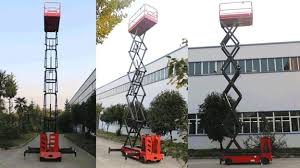Line markings play a crucial role in various environments, from parking lots and warehouses to workplaces and public spaces. Their significance lies in enhancing safety and organization, ensuring clear communication, and facilitating efficient traffic control. In this blog, we will delve into the importance of line markings and how they contribute to creating secure and well-organized environments. Let’s explore each aspect in detail.
Safety Enhancement
One of the primary reasons for implementing line markings is to promote safety. By clearly delineating pathways and walkways for pedestrians, line markings help prevent accidents and injuries. They create a visual guide, guiding people safely through spaces and keeping them away from potential hazards. They can effectively designate areas where caution should be exercised, such as staircases, ramps, or construction zones.
Traffic Control
They are instrumental in managing and directing vehicular traffic. In parking lots and roadways, well-designed line markings create designated lanes, guiding drivers and reducing confusion. They provide clear instructions for parking spaces, indicating where vehicles should be parked and how they should align within each designated area. By optimizing traffic flow and reducing congestion, line markings enhance transportation safety and efficiency.
Organization and Efficiency
They greatly contribute to organizational efforts within various environments. In workplaces, warehouses, and factories, They can be used to mark specific areas for different activities or operations. This helps establish order, making it easier for employees to navigate and locate the appropriate areas for their tasks. In warehouses, They aid in optimizing space utilization, streamlining processes, and improving overall productivity.
Clear Communication
Effective communication is vital in shared spaces, and They serve as a non-verbal means of conveying important information. They indicate boundaries, guidelines, and instructions, facilitating smooth navigation and wayfinding for visitors or newcomers. For instance, in public facilities, these markings can direct individuals to entrances, exits, and important amenities.
Compliance with Regulations and Standards
They are subject to legal and regulatory requirements in various industries. Adhering to safety and accessibility guidelines is essential to ensure compliance and mitigate potential risks. By implementing proper markings, businesses can avoid penalties or legal issues related to non-compliance. Understanding and following industry-specific standards demonstrate a commitment to safety and a responsible approach to creating secure environments for employees, customers, and visitors.
Aesthetics and Branding
They not only serve practical purposes but also contribute to the visual aesthetics of a space. Well-designed markings can incorporate company branding and logos, creating a cohesive and professional appearance. By aligning markings with a company’s visual identity, businesses can enhance their brand presence and create a visually appealing environment for their stakeholders.
Long-Term Cost Savings
Implementing effective line markings can result in long-term cost savings for businesses and organizations. By reducing accidents and injuries through clear demarcation of hazardous areas and proper traffic control, companies can minimize potential liability and associated expenses. Efficient traffic flow, facilitated by well-planned markings, also reduces disruptions and downtime. In addition, organized workspaces, optimized through line markings, contribute to improved productivity, reducing errors and inefficiencies that can incur unnecessary costs.
Maintenance and Durability
To ensure the continued effectiveness of line markings, regular maintenance is essential. Periodic inspections and touch-ups help preserve their visibility and functionality. High-quality line marking materials are designed for durability, able to withstand weather conditions and heavy usage. By investing in durable markings and adhering to maintenance protocols, businesses can ensure the long-term effectiveness of their line marking systems.
Conclusion
Line markings play a crucial role in enhancing safety and organization in various environments. From promoting safety and efficient traffic control to facilitating clear communication and complying with regulations, They provide numerous benefits. By prioritizing the implementation of effective markings, businesses and organizations can foster environments that prioritize safety, enhance productivity, and leave a positive impression on employees, customers, and visitors alike.





